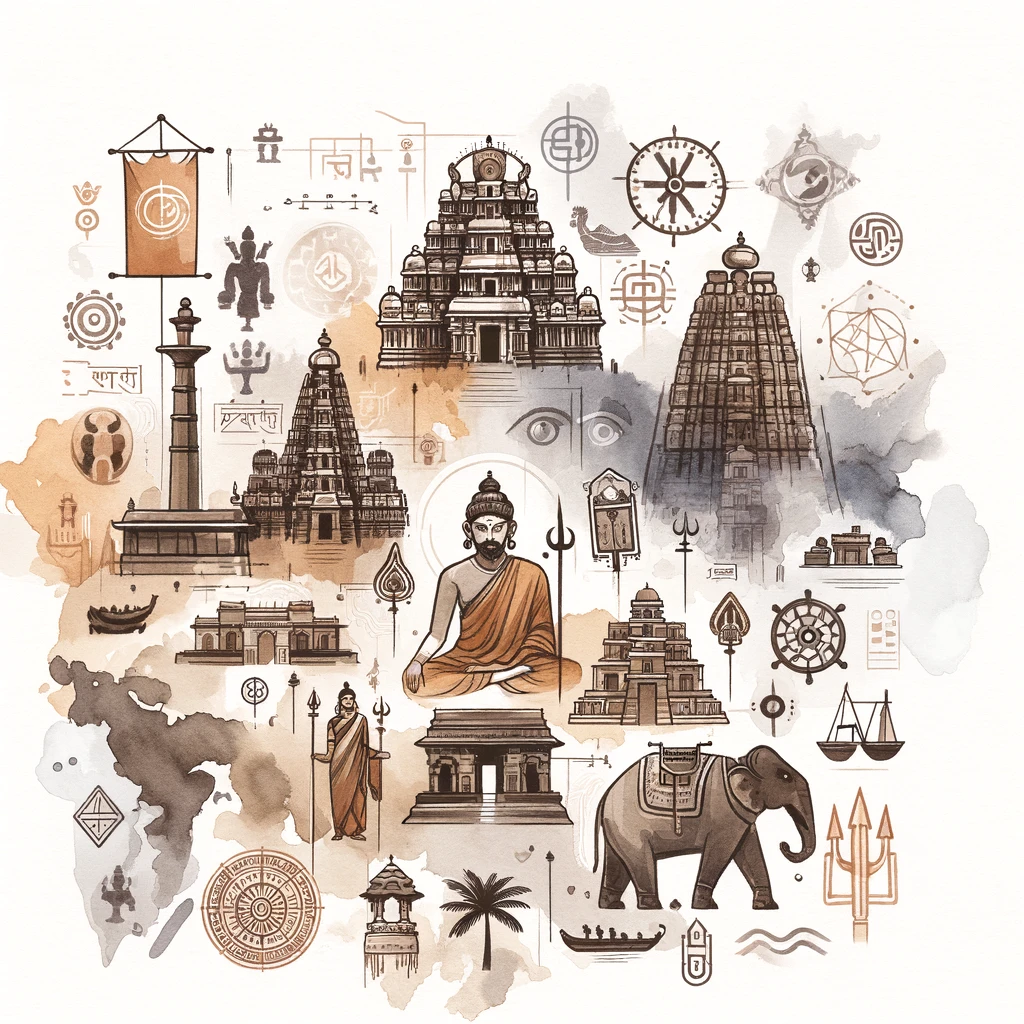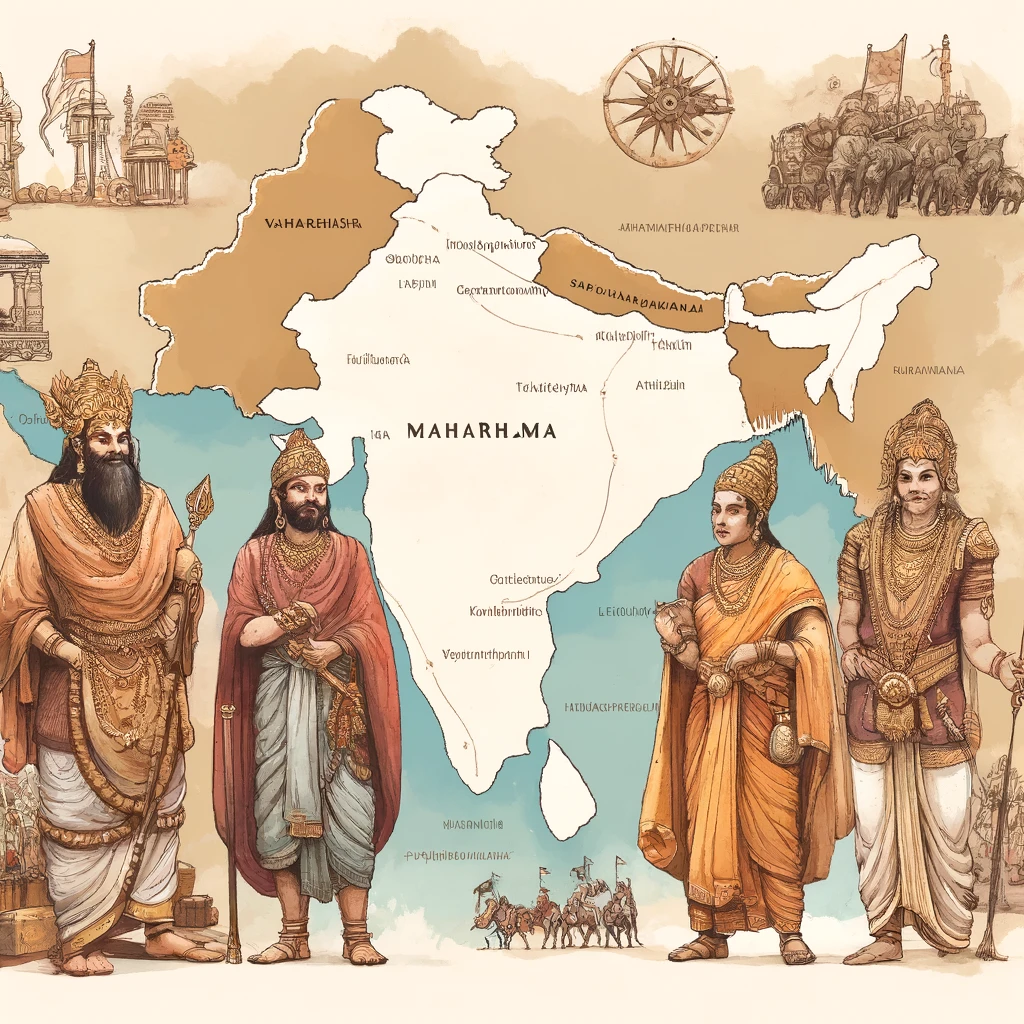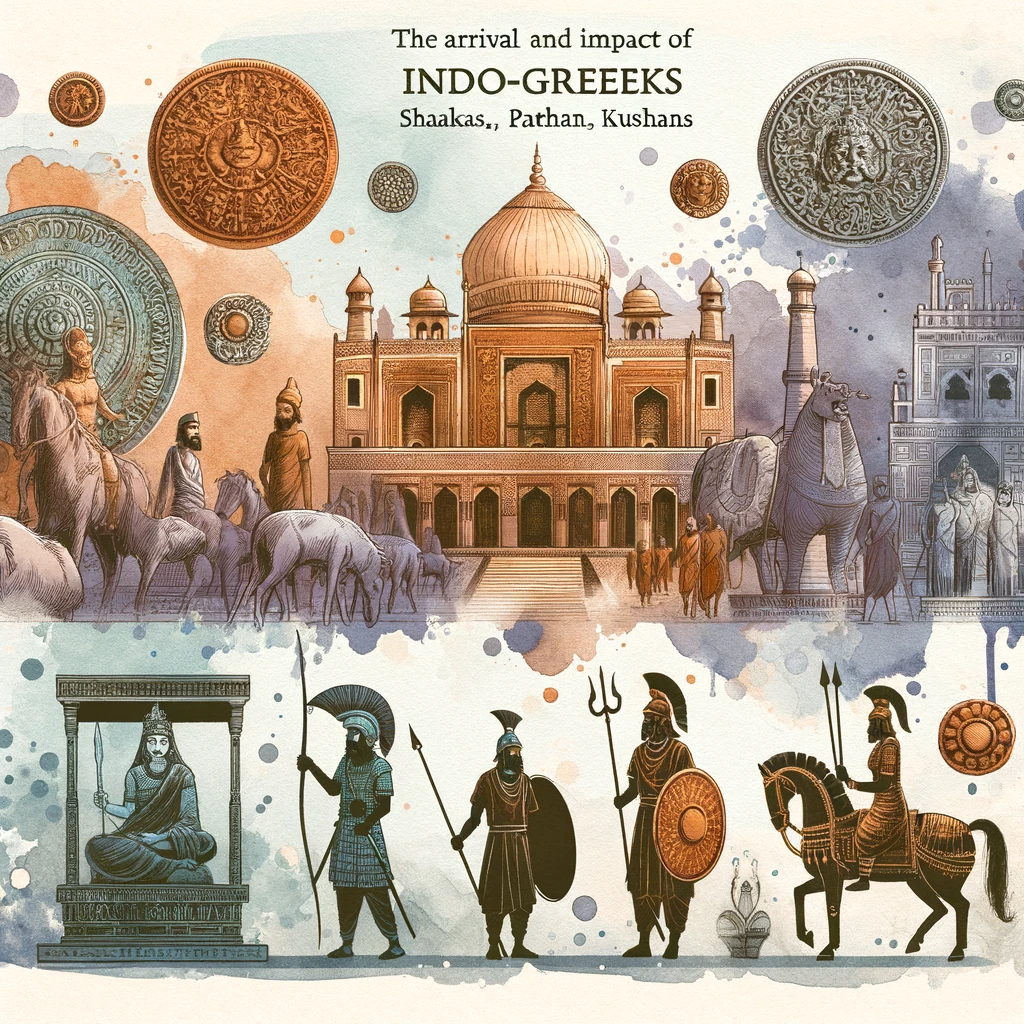The period following the decline of the Mauryan Empire saw the rise of several indigenous dynasties that played crucial roles in the political, economic, and cultural landscape of ancient India. Among these, the Satavahana dynasty stands out as one of the most significant. This era also witnessed the rise of other important dynasties, each contributing to the regional diversity and overall prosperity of the subcontinent.

Satavahana Dynasty
Origins and Rise
- The Satavahana dynasty, also known as the Andhras, emerged around the 1st century BCE and ruled over a large part of the Deccan and central India. Their kingdom extended from present-day Maharashtra and Telangana to parts of Madhya Pradesh and Karnataka.
- The dynasty is believed to have been founded by Simuka, with significant expansion under his successors.
Prominent Rulers
Gautamiputra Satakarni (c. 78–102 CE):
- One of the most notable rulers, Gautamiputra Satakarni, restored the power of the Satavahanas after a period of decline. He is known for his military conquests and for consolidating the empire.
- His reign marked the defeat of the Shakas and the reclamation of lost territories, which significantly bolstered the empire’s strength.
Vashishtiputra Pulumavi (c. 102-130 CE):
- The son of Gautamiputra Satakarni, Vashishtiputra Pulumavi, continued his father’s policies and further expanded the empire’s influence, particularly in the southern regions.
Yajna Sri Satakarni (c. 152-181 CE):
- Another significant ruler, Yajna Sri Satakarni, is known for his extensive trade and maritime activities, which contributed to the economic prosperity of the Satavahana kingdom.
Administration:
- The Satavahanas adopted a centralized administration with a well-defined hierarchy. The king was the supreme authority, supported by a council of ministers and various officials.
- The empire was divided into provinces (Aharas), each governed by an Amatya or Mahamatya (minister).
- The Satavahanas were known for their patronage of Brahmanism and Buddhism, supporting religious institutions, and granting land to Brahmins and Buddhist monks.
Other Indigenous Dynasties
Western Kshatrapas:
- The Western Kshatrapas, also known as the Shaka Kshatrapas, ruled over parts of western India, including Gujarat and Maharashtra, from the 1st to the 4th century CE.
- They maintained a distinct cultural identity while adopting local administrative practices and promoting trade and urbanization.
Ikshvakus:
- The Ikshvaku dynasty emerged in the Krishna-Guntur region of Andhra Pradesh in the 3rd century CE. They were known for their patronage of Buddhism and the construction of Buddhist stupas and monasteries.
- Their administration was similar to that of the Satavahanas, with a focus on centralized control and regional governance.
Cheras, Cholas, and Pandyas:
- These dynasties ruled over the southern part of India, each contributing to the political and cultural milieu of the region. The Cheras ruled in Kerala, the Cholas in Tamil Nadu, and the Pandyas in southern Tamil Nadu.
- They are noted for their maritime trade, vibrant cultural life, and significant contributions to Tamil literature and temple architecture.
Satavahana Economy
Agriculture
- Agriculture was the backbone of the Satavahana economy. The fertile regions of the Deccan Plateau supported the cultivation of various crops, including rice, wheat, barley, and pulses.
- The state encouraged irrigation projects and land reclamation to enhance agricultural productivity.
Crafts and Industries
- The Satavahanas were known for their advanced crafts and industries. These include weaving, metalwork, pottery, and bead-making. The production of cotton textiles was particularly significant and a major export commodity.
- The period also saw the development of skilled artisans and the establishment of guilds that regulated production and trade.

Trade
Internal Trade
- The Satavahana period witnessed a flourishing internal trade network, connecting various regions of the subcontinent. Well-maintained roads and trade routes facilitated the movement of goods.
- Urban centers like Pratishthana (modern Paithan) and Amaravati became major trade hubs, supporting a bustling economy.
External Trade
- The Satavahanas actively engaged in maritime trade with distant regions, including the Roman Empire, Southeast Asia, and China. Ports along the western coast, such as Sopara and Kalyan, played crucial roles in facilitating overseas trade.
- Indian goods like spices, textiles, precious stones, and ivory were in high demand in foreign markets. In return, India imported items such as wine, glassware, and coins from the Roman Empire.
- The use of Roman gold coins in Satavahana territory indicates extensive trade relations and the prosperity that came from this exchange.
Economic Policies
Taxation and Revenue
- The Satavahana administration implemented a structured taxation system, collecting revenue from land, trade, and crafts. Taxes were often paid in kind, with agricultural produce and manufactured goods being common forms of payment.
- Revenue was used to fund public works, including the construction of roads, irrigation systems, and religious establishments.
Monetary System
- The Satavahanas issued their coinage, which facilitated trade and economic transactions. The ruler’s portrait and symbol of reign were inscribed on the coins.
- The circulation of coins helped standardize the economy and supported the extensive trade networks within and beyond the empire.

Conclusion
The post-Mauryan period was marked by the rise of several indigenous dynasties, with the Satavahanas being the most prominent. These dynasties played a crucial role in shaping the political, economic, and cultural landscape of ancient India. Their efficient administration, thriving economies, and extensive trade networks fostered regional prosperity and facilitated cultural exchanges. For UPSC aspirants, understanding the political history, administration, and economic conditions of these dynasties is essential for appreciating the rich and diverse heritage of ancient India.



